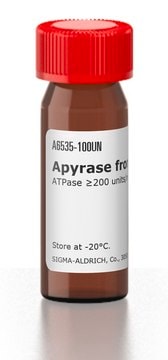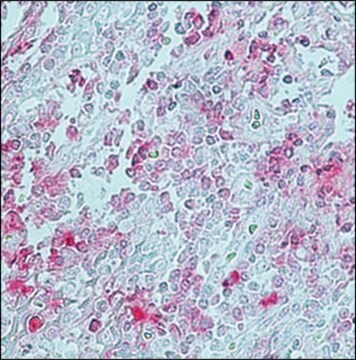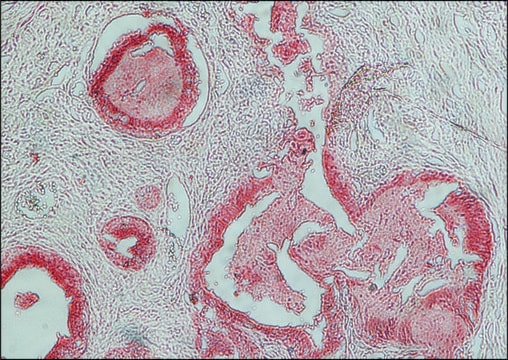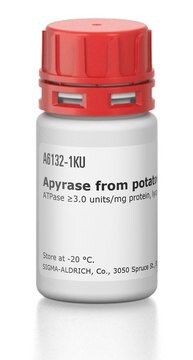A2306
Monoclonal Anti-Rabbit Immunoglobulins−Alkaline Phosphatase antibody produced in mouse
clone RG-16, purified immunoglobulin, buffered aqueous glycerol solution
Sinonimo/i:
Monoclonal Anti-Rabbit Immunoglobulins (IgG, IgA, IgM)
About This Item
Prodotti consigliati
Origine biologica
mouse
Coniugato
alkaline phosphatase conjugate
Forma dell’anticorpo
purified immunoglobulin
Tipo di anticorpo
secondary antibodies
Clone
RG-16, monoclonal
Stato
buffered aqueous glycerol solution
Reattività contro le specie
rabbit
Non deve reagire con
pig, chicken, bovine, horse, human, guinea pig, turkey, rat, canine, goat, feline, sheep
tecniche
direct ELISA: 1:40,000
immunohistochemistry (formalin-fixed, paraffin-embedded sections): 1:160 using human tonsil and Cat. No. I8635 as the primary antibody
western blot: 1:160,000-1:320,000 using detecting β-actin in total cell extract of HeLa cells (5-10 μg per well)
Isotipo
IgG1
Condizioni di spedizione
wet ice
Temperatura di conservazione
2-8°C
modifica post-traduzionali bersaglio
unmodified
Cerchi prodotti simili? Visita Guida al confronto tra prodotti
Descrizione generale
Specificità
Applicazioni
- indirect enzyme linked immunosorbent assay (ELISA)
- immunoblotting
- immunohistochemistry
Azioni biochim/fisiol
Mouse monoclonal anti-rabbit immunoglobulins-alkaline phosphatase antibody binds to an epitope on the heavy chain of rabbit IgG, IgA, and IgM. The product stains bands at the intact whole molecule and at the heavy chains in an immunoblot of denatured, non-reduced rabbit immunoglobulins. Reduction of rabbit immunoglobulins destroys the epitope. In ELISA, the product shows no cross reaction with human serum or tissue preparations, nor with human IgA, IgG, or IgM.
Stato fisico
Esclusione di responsabilità
Non trovi il prodotto giusto?
Prova il nostro Motore di ricerca dei prodotti.
Codice della classe di stoccaggio
10 - Combustible liquids
Classe di pericolosità dell'acqua (WGK)
WGK 3
Punto d’infiammabilità (°F)
Not applicable
Punto d’infiammabilità (°C)
Not applicable
Dispositivi di protezione individuale
Eyeshields, Gloves, multi-purpose combination respirator cartridge (US)
Scegli una delle versioni più recenti:
Possiedi già questo prodotto?
I documenti relativi ai prodotti acquistati recentemente sono disponibili nell’Archivio dei documenti.
Il team dei nostri ricercatori vanta grande esperienza in tutte le aree della ricerca quali Life Science, scienza dei materiali, sintesi chimica, cromatografia, discipline analitiche, ecc..
Contatta l'Assistenza Tecnica.








